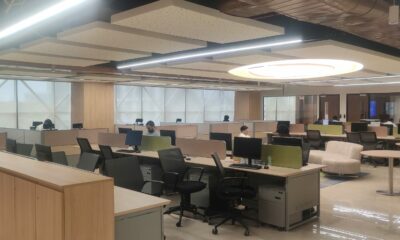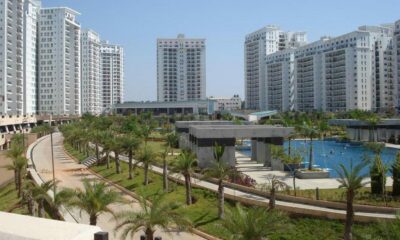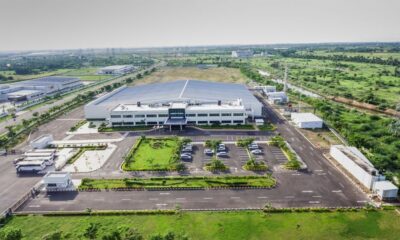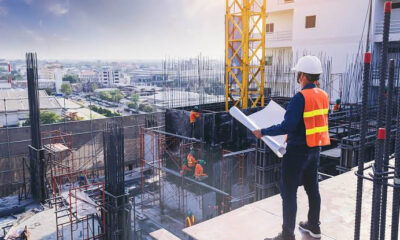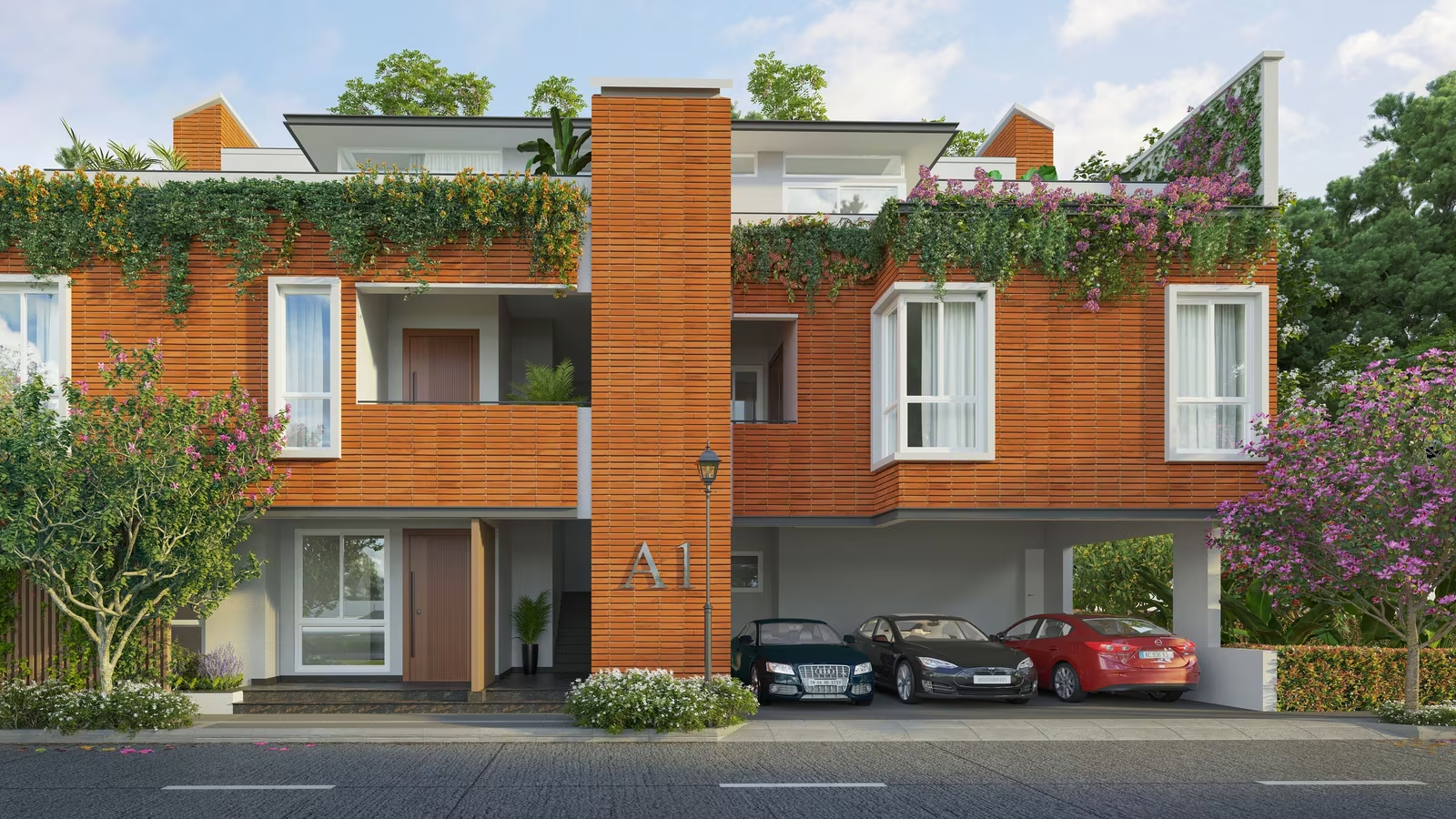News
As commercial realty braves COVID-19 impact, Southern markets offer a ray of hope: C&W India Office Report Q2


According to the report, the COVID-19 crisis and the following national lockdown in phases across all major cities have impacted the gross leasing activity in the commercial office adversely in Q2.
Gross leasing of 7.32 msf, which is 55.5 pc lower on q-o-q basis and lower by 61.6 pc on a y-o-y basis. During H1 2020 the total gross leasing activity was at 23.76 msf which is also lower by 26.0 per cent compared to H1 2019.
In Q2, Southern cities of Bengaluru, Hyderabad and Chennai were the most active markets with 30.1 pc, 22.2 pc and 17.7 pc shares in gross leasing volumes, respectively. On half yearly basis, Bengaluru led the charts with 24.4 pc share followed by Delhi NCR and Mumbai with share of 21.4 pc and 17.1 pc share respectively. Only Chennai has seen q-o-q growth in gross leasing whereas as all the cities has seen drop in gross leasing on yearly and half yearly basis.
| Gross Leasing | H1 2019 | H1 2020 | Percentage Increase (y-o-y) | |
| Mumbai | 5.679 | 4.058 | -28.5% | |
| Delhi NCR | 6.103 | 5.079 | -16.8% | |
| Bengaluru | 10.150 | 5.749 | -42.9% | |
| Chennai | 2.785 | 1.997 | -28.3% | |
| Pune | 2.766 | 2.137 | -22.7 | |
| Hyderabad | 3.781 | 3.423 | -9.5 | |
| Kolkata | 0.583 | 0.676 | 15.9% | |
| Ahmedabad | 0.259 | 0.594 | 128.9% | |
| Pan India | 32.108 | 23.761 | -26.0% |
The completion activity also remained slow during the second quarter, resulted in 7.54 mn of supply being added, which was lower by 23.8 pc on q-o-q basis. On a y-o-y basis, new completions were down by 49.9 pc and 43.8% down on half yearly basis. Hyderabad led the way with a 40.5 pc share of new supply, followed by Mumbai, Delhi NCR and Pune with 21.6 pc and 12.0 pc share respectively. Whereas, on half yearly basis Bengaluru hold the maximum share with 27.0 pc share, followed by Hyderabad and Delhi NCR with 23.2 pc and 17.6 pc share.
The net absorption in Q2 2020 stands at 3.72 msf, which is lower by 49.5% on a quarterly basis and 73.4% lower on a yearly basis as fresh transaction activity was muted during the quarter. Also, cities like Delhi NCR and Bengaluru has seen negative absorption which also pushed the overall net absorption downwards. Hyderabad, Mumbai and Chennai have contributed significantly towards net absorption with share of 47.3 pc, 44.3 pc and 14.1 pc respectively, mainly due to projects with significant pre-commitments becoming operational during the quarter which resulted in improved overall net absorption.
In terms of leasing activity in Q2, the IT-BPM sector continued to witness maximum share with 43.0% share in overall leasing. Healthcare & Pharma accounted for a 18.6% share followed by Captive centres (GCCs) with a 10.1% share. The IT-BPM sector on half yearly basis also seen the maximum share.
| Sector | Q1 2020 | Q2 2020 |
| IT/BPM | 32.0% | 43.0% |
| Captive Centres | 15.8% | 10.6% |
| Healthcare & Pharma | 2.2% | 18.6% |
| Flex workspaces | 13.5% | 3.9% |
| Source: Cushman & Wakefield Research India | ||
The pre-commitment activity was 3.41 msf compared to 2.25 msf in the previous quarter, on the back of improved pre-leasing activity in Bengaluru and Hyderabad. This points towards healthy medium-term forecasts for the sector’s recovery as occupiers commit to space take-up based on future growth plans. Bengaluru led with a 43 pc share, followed by Hyderabad with 39 pc share, Delhi-NCR with 11 pc share and Chennai with 7 pc share.
Commenting on Office Market report for Q2, Anshul Jain, Managing Director – South East Asia and India, Cushman & Wakefield, said, “As the world got more engaged to deal with the impact of coronavirus, the resilience of commercial real estate in India was tested. This is reflected in the dwindling demand and supply numbers in H1 2020.
However, key markets in the southern cities show the highest level of activity during Q2, with Bengaluru leading the pack. In an ever-evolving situation, it may be difficult to predict the timeline within which commercial real estate in India might be able to restore its pre-COVID growth momentum. But, a certain level of normalcy could be expected in H2 as companies gradually resume their operations.”
-



 News4 weeks ago
News4 weeks agoKW Delhi 6 Mall Onboards New Brands
-



 News4 weeks ago
News4 weeks agoManasum Senior Living Launches IKIGAI GOA, A Senior Living Community in North Goa, in collaboration with Prescon Homes
-



 News4 weeks ago
News4 weeks agoBridging India Divide: Top 5 Tier- 2 Cities to Focus On
-



 News4 weeks ago
News4 weeks agoCommercial Realty Gets Tech Savvy: Fast Construction, Enhanced Convenience
-



 News3 weeks ago
News3 weeks agoGodrej Properties Sells Rs 3k cr+ Homes of Godrej Zenith, Gurugram, within 3 days
-



 News4 weeks ago
News4 weeks agoMultipoint Connection – A Definite Boon
-



 News3 weeks ago
News3 weeks agoRBI’s Status Quo on Key Policy Rates to Help Maintain the Real Estate Growth Momentum, Say Industry Stalwarts
-



 News2 weeks ago
News2 weeks agoOlive Announces Dhruv Kalro as Co-Founder







